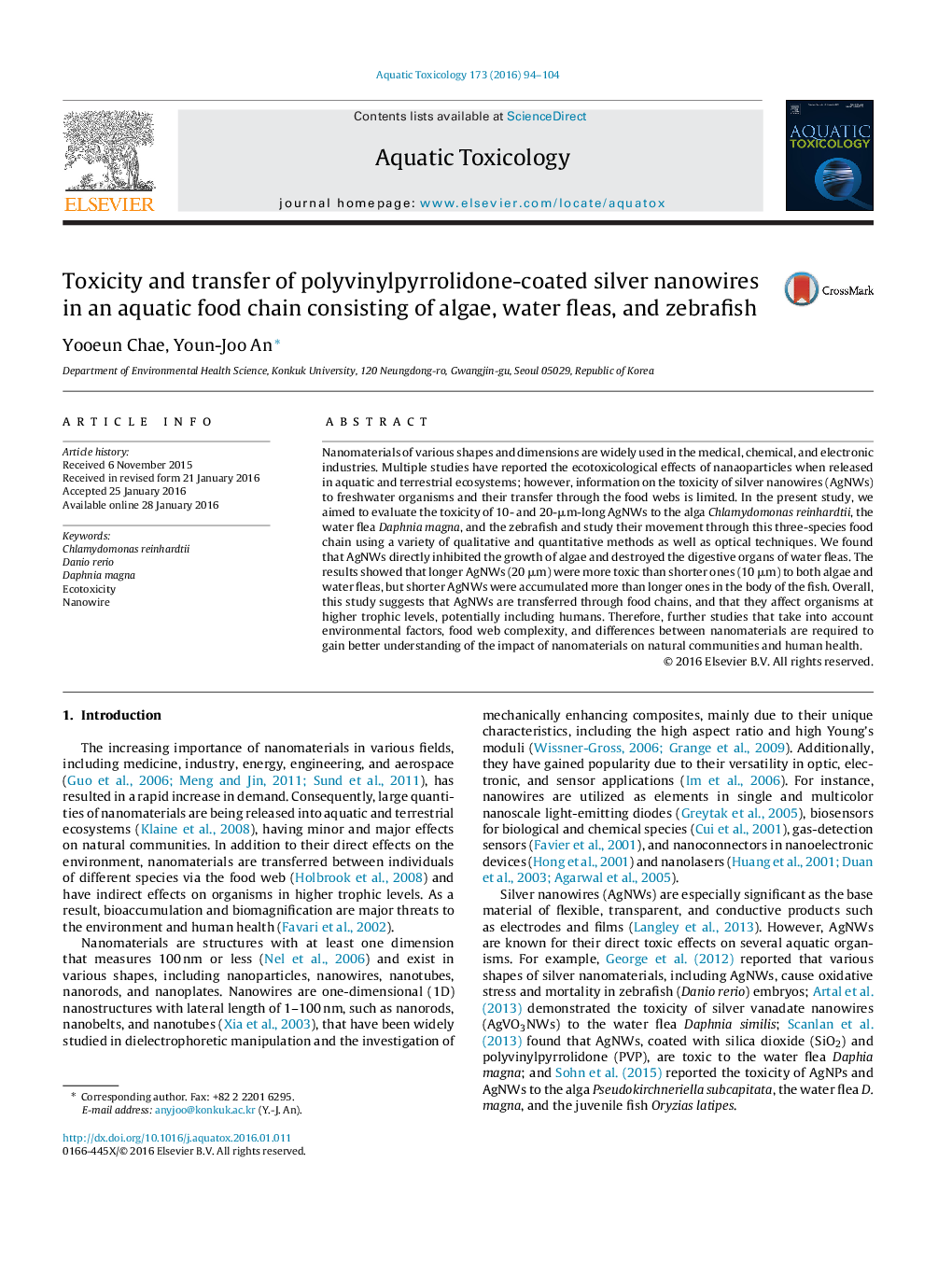| کد مقاله | کد نشریه | سال انتشار | مقاله انگلیسی | نسخه تمام متن |
|---|---|---|---|---|
| 4528870 | 1625932 | 2016 | 11 صفحه PDF | دانلود رایگان |
• Trophic transfer of silver nanowires (AgNWs) was studied in an aquatic food chain.
• The transfer of AgNWs from algae to fish via water fleas was observed.
• Toxicity of long AgNWs on aquatic organisms is higher than that of short ones.
• AgNWs damage the gut of water fleas and may cause undernourishment.
• Quantity of lipid droplets increased with increasing exposure concentration.
Nanomaterials of various shapes and dimensions are widely used in the medical, chemical, and electronic industries. Multiple studies have reported the ecotoxicological effects of nanaoparticles when released in aquatic and terrestrial ecosystems; however, information on the toxicity of silver nanowires (AgNWs) to freshwater organisms and their transfer through the food webs is limited. In the present study, we aimed to evaluate the toxicity of 10- and 20-μm-long AgNWs to the alga Chlamydomonas reinhardtii, the water flea Daphnia magna, and the zebrafish and study their movement through this three-species food chain using a variety of qualitative and quantitative methods as well as optical techniques. We found that AgNWs directly inhibited the growth of algae and destroyed the digestive organs of water fleas. The results showed that longer AgNWs (20 μm) were more toxic than shorter ones (10 μm) to both algae and water fleas, but shorter AgNWs were accumulated more than longer ones in the body of the fish. Overall, this study suggests that AgNWs are transferred through food chains, and that they affect organisms at higher trophic levels, potentially including humans. Therefore, further studies that take into account environmental factors, food web complexity, and differences between nanomaterials are required to gain better understanding of the impact of nanomaterials on natural communities and human health.
Journal: Aquatic Toxicology - Volume 173, April 2016, Pages 94–104
